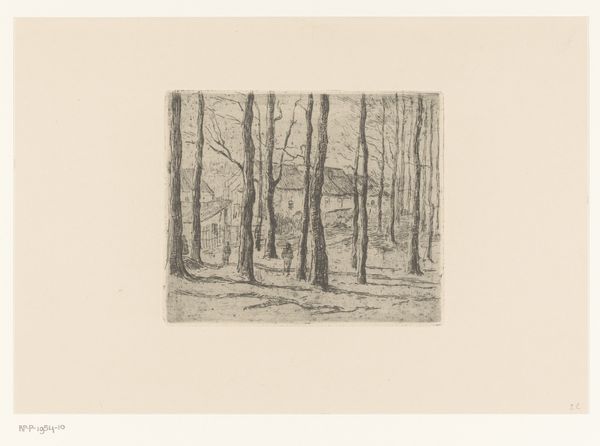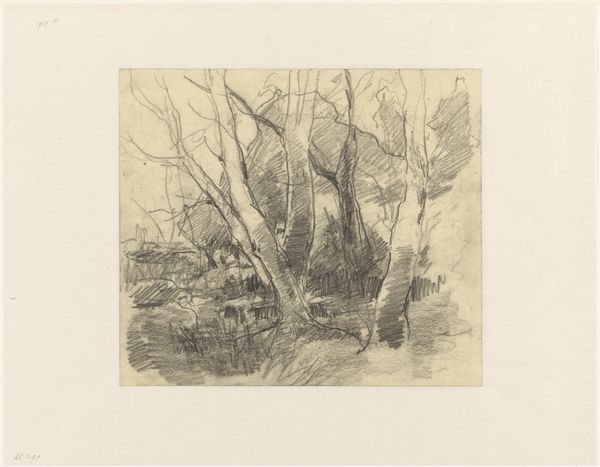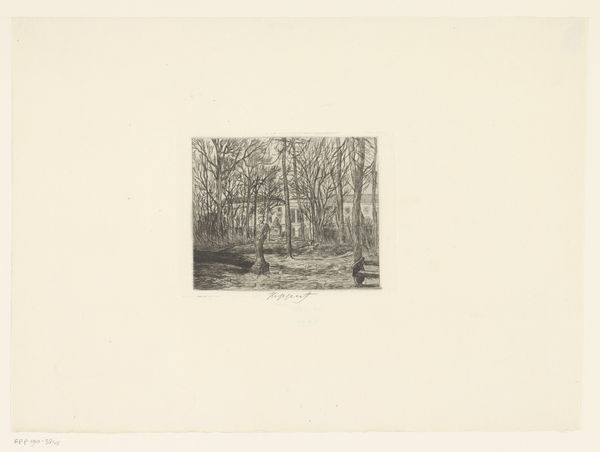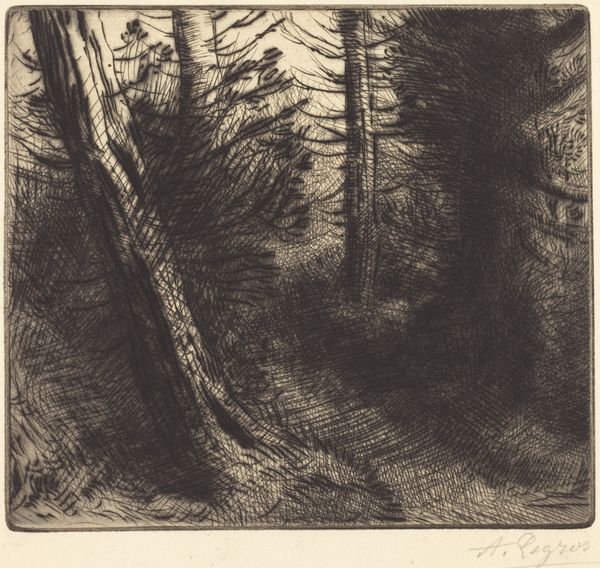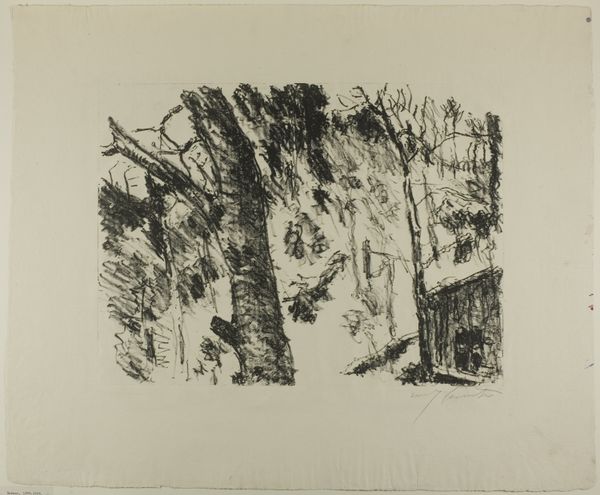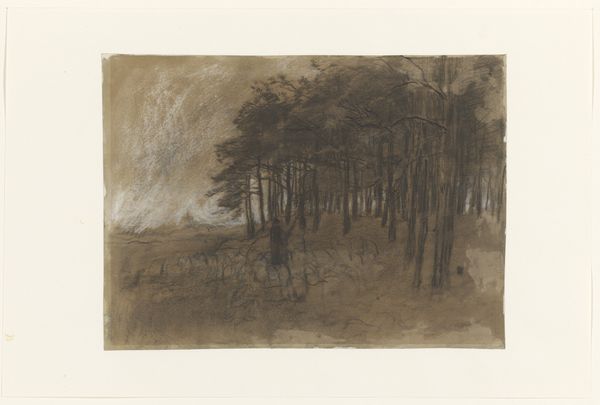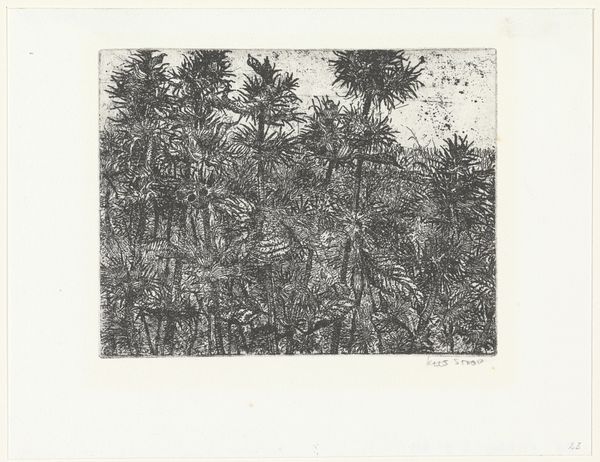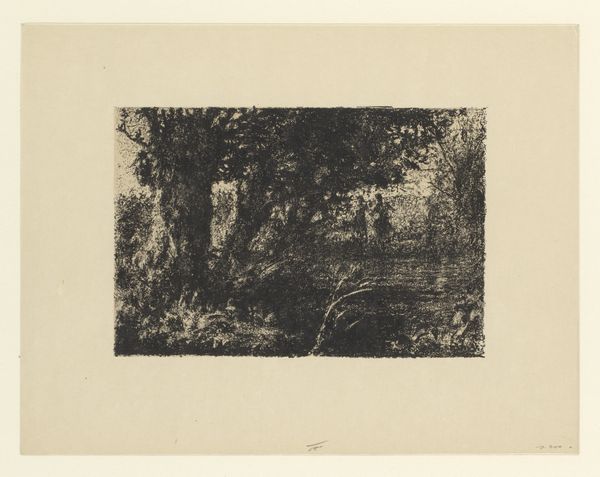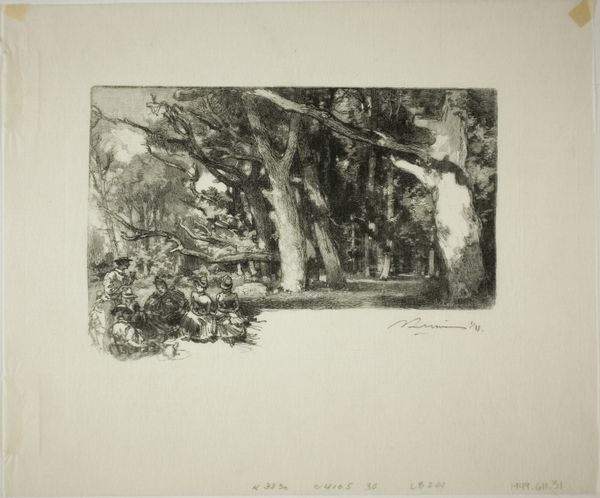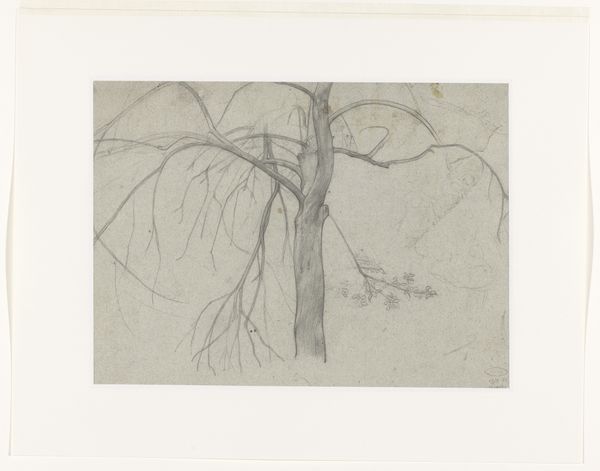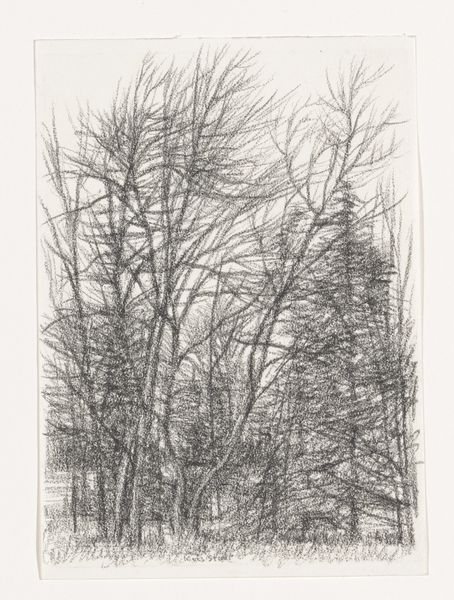
drawing, print, etching, woodcut, graphite
#
drawing
# print
#
etching
#
landscape
#
linocut print
#
forest
#
woodcut
#
graphite
Dimensions: height 200 mm, width 247 mm, height 110 mm, width 149 mm
Copyright: Rijks Museum: Open Domain
Editor: Here we have "Naaldbos," a forest scene by Kees Stoop, created sometime between 1944 and 1990. It's rendered through etching, woodcut, graphite, and other printmaking methods. The density of the marks really creates an eerie feeling...what do you make of it? Curator: Let's consider the labor involved in creating this "Naaldbos". Notice the intensive, repetitive process of etching, woodcutting, and graphite drawing. It points to a specific kind of skilled labor. Stoop clearly leverages techniques associated with mass production to depict a singular landscape. Why the seeming contradiction? Editor: I guess because prints, even when depicting nature, always involve a degree of mechanical reproduction. Was Stoop perhaps commenting on industrialisation even while depicting nature? Curator: Precisely. Furthermore, consider the materials. Graphite, wood, and the etching acids themselves—sourced from and impacting the earth. These choices bring into focus the consumption involved, both of resources to create the image and in how the finished work is commodified. Is it naive escapism or some form of quiet protest? What's the setting? Editor: It is from the Netherlands and during that time it suffered greatly under the Nazis during the Second World War. Maybe it is quiet contemplation. It must have taken him some time to develop each plate used to build up these layers, which must be how he processed it. Curator: Precisely! So rather than just admiring the 'scene,' perhaps we can better interpret Stoop's intentions by scrutinizing the processes, the artist's labor, and how the piece implicates us in cycles of production and consumption. Editor: It reframes my understanding of landscape art – moving away from idealized visions to consider its connection to the environment and the socio-economic context. Curator: Indeed. Now when you see 'nature' depicted, consider also the 'nature' of its making.
Comments
No comments
Be the first to comment and join the conversation on the ultimate creative platform.
